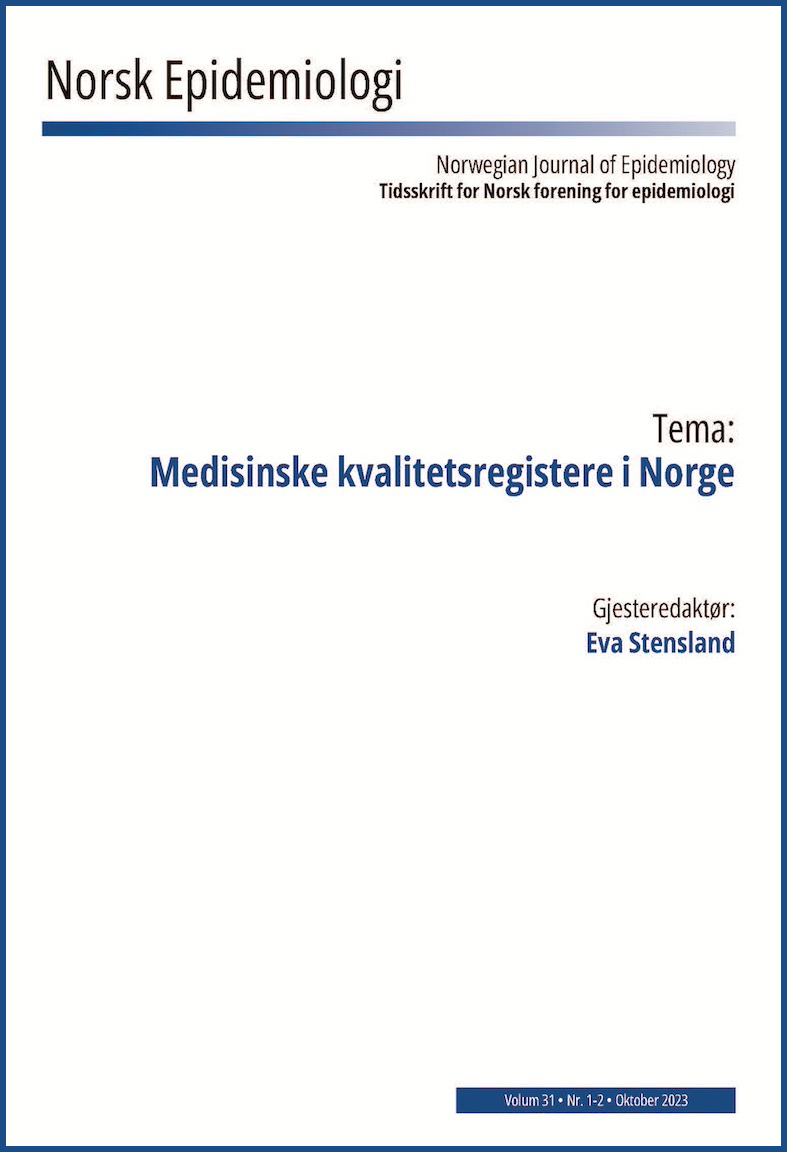External validation of SAPS II score reported to the Norwegian Intensive Care and Pandemic Registry (NIPaR)
DOI:
https://doi.org/10.5324/nje.v31i1-2.5618Abstract
Background: Simplified Acute Physiology Score II (SAPS II) is a mortality prediction model widely used
to compensate for differences between intensive care units (ICU) in benchmarking and research. Accuracy
of SAPS II is sparsely documented. We investigate accuracy by comparing patient journal SAPS II values
with registry SAPS II values in the Norwegian Intensive Care and Pandemic Registry (NIPaR).
Method: NIPaR personnel collected data from the patient journal during visitations to ICUs in ten different
hospitals between 2017 and 2022 while blinded for registry SAPS II data. The patient journal SAPS II values
were subsequently compared with the registry SAPS II values.
Results: Difference of means for SAPS II score between patient journal and registry data was 5.2 points
(95% CI 2.8–7.6; p < 0.001). SAPS II score depended significantly on ICU (p < 0.001) and data origin (p =
0.006), whereas the interaction term for these two variables was not significant.
Conclusion: We find low accuracy of SAPS II score in a registry setting.
Downloads
Downloads
Published
How to Cite
Issue
Section
License
Copyright (c) 2023 Eirik Alnes Buanes, Øyvind Bruserud, Sergio Carracedo Huroz

This work is licensed under a Creative Commons Attribution 4.0 International License.
Norsk Epidemiologi licenses all content of the journal under a Creative Commons Attribution (CC-BY) licence. This means, among other things, that anyone is free to copy and distribute the content, as long as they give proper credit to the author(s) and the journal. For further information, see Creative Commons website for human readable or lawyer readable versions.
Authors who publish with this journal agree to the following terms:
1. Authors retain copyright and grant the journal right of first publication with the work simultaneously licensed under a Creative Commons Attribution License that allows others to share the work with an acknowledgement of the work's authorship and initial publication in this journal.
2. Authors are able to enter into separate, additional contractual arrangements for the non-exclusive distribution of the journal's published version of the work (e.g., post it to an institutional repository or publish it in a book), with an acknowledgement of its initial publication in this journal.
3. Authors are permitted and encouraged to post their work online (e.g., in institutional repositories or on their website) prior to and during the submission process, as it can lead to productive exchanges, as well as earlier and greater citation of published work (See The Effect of Open Access).

